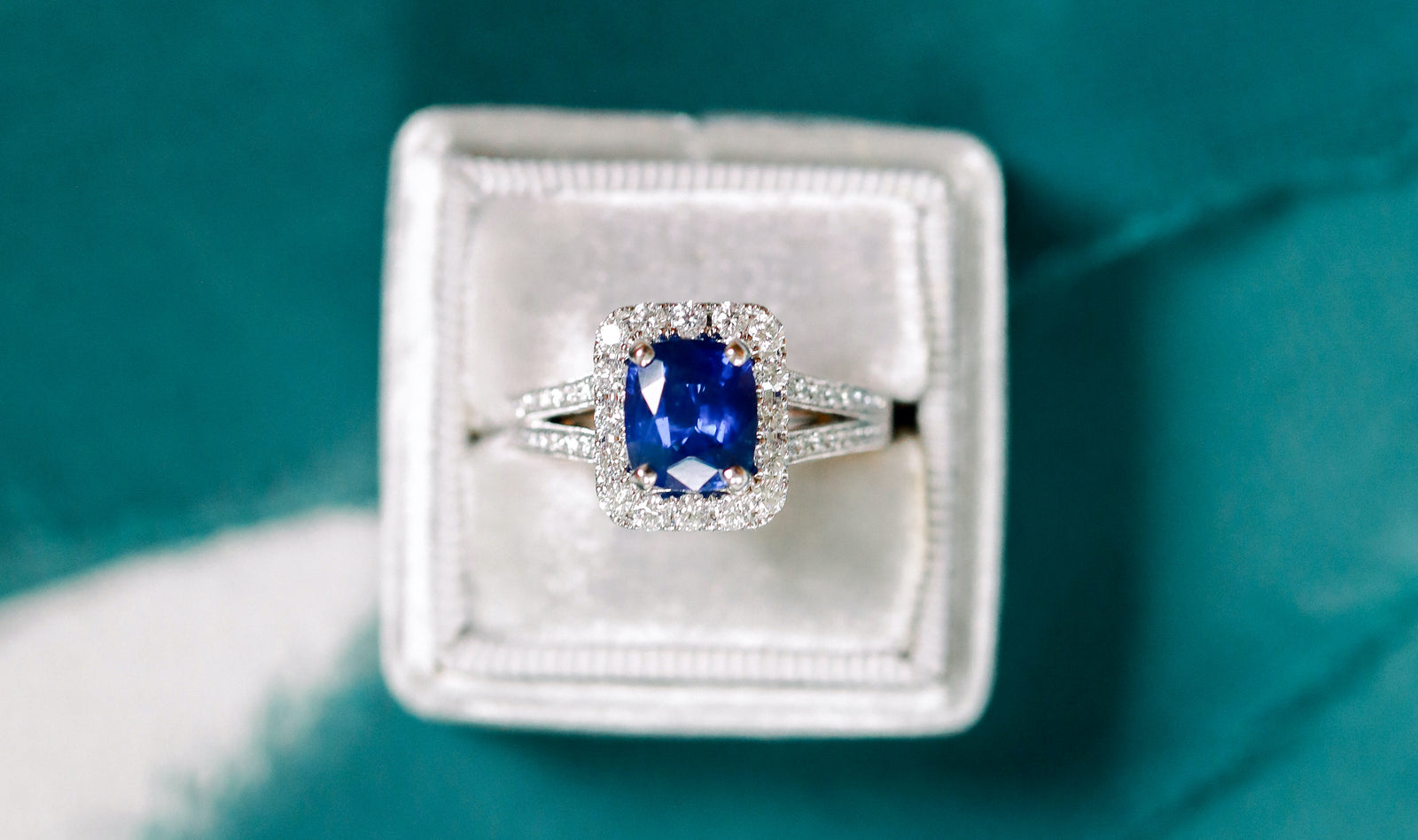September Birthstone: Sapphire
September has arrived and it's time to talk about sapphires! People with a September birthday can choose from a variety of beautiful sapphire colors, shapes and appearances. The word, sapphire, refers to any color of the corundum mineral family except red, though most people immediately think of a velvety blue when considering this September birthstone. You will find this amazing and durable gemstone not only in jewelry but also in industrial glass, fine watches, and even the space station. If you are interested in purchasing a sapphire, we have answers to some of frequently asked questions and even a few questions you may not know to ask!

What should I look for when buying a blue sapphire?
- The most highly valued blue sapphires are a velvety blue with medium to medium dark tones. A strong to vivid color saturation that does not darken the color is best. When shopping it is wise to ask your jeweler if you can compare several sapphires side by side. This will help you decide the color and saturation that best fits your taste.
- Blue sapphires without inclusions are very rare and very valuable.
- However, sapphire often contains tiny intersecting needles of rutile that gemologists call silk. Some of the most prized sapphires in the world come from Kashmir and have this velvety silk appearance.
What are some other colors and types of sapphires?
- The major fancy sapphire color categories are padparadscha, pink and purple, orange and yellow, green, and colorless and black. Each category has its own color range and causes of color.
- Padparadscha sapphires are an extremely rare pinkish orange color. Their color is very hard to describe but some refer to it as salmon or sunset. The word padparadscha came from the sanskrit language and referred to the rich color of the lotus blossom. Due to their rarity, a true padparadscha sapphire can hold a higher price tag than a diamond of the same size.
- Color change sapphires change color under different forms of lighting. Under a fluorescent light, the typical color change sapphire will change from blue to violet. Under incandescent light, the color will range from a violetish purple to a strong, reddish purple. Gem experts will grade a sapphire’s color change either weak, moderate, or strong. The strength of this change is an important factor in determining the stone’s value.

- Star sapphires belong to the phenomenal corundum category. The star effect is called asterism and is caused by reflections from tiny, needle-like inclusions that are oriented in several specific directions. Star sapphires can be red, pink, blue, black, gray, brown, purple, or yellow—practically every color under the sun.
Is sapphire suitable for all forms of jewelry?
- The sapphire scores a 9 on the Mohs Hardness Scale, second only to diamonds. This means that sapphire is a great choice for almost any type of jewelry and has been used as an alternative to the diamond engagement ring for many years.
How should I care for my sapphire jewelry?
- Most sapphires can be cleaned in an ultrasonic cleaner but stones that are fracture-filled or cavity-filled should only be cleaned with warm soapy water and a soft bristled brush.
- Wrapping sapphire jewelry in a soft cloth or storing it in a separate box can keep your sapphires from being scratched by diamonds or causing scratches on softer gemstones.


